Zwift extends sponsorship of Tour de France Femmes: 'It is an absolute, clear, undeniable success'
In an exclusive interview, Zwift reveals how investing in women’s cycling benefits both the sport and its bottom line
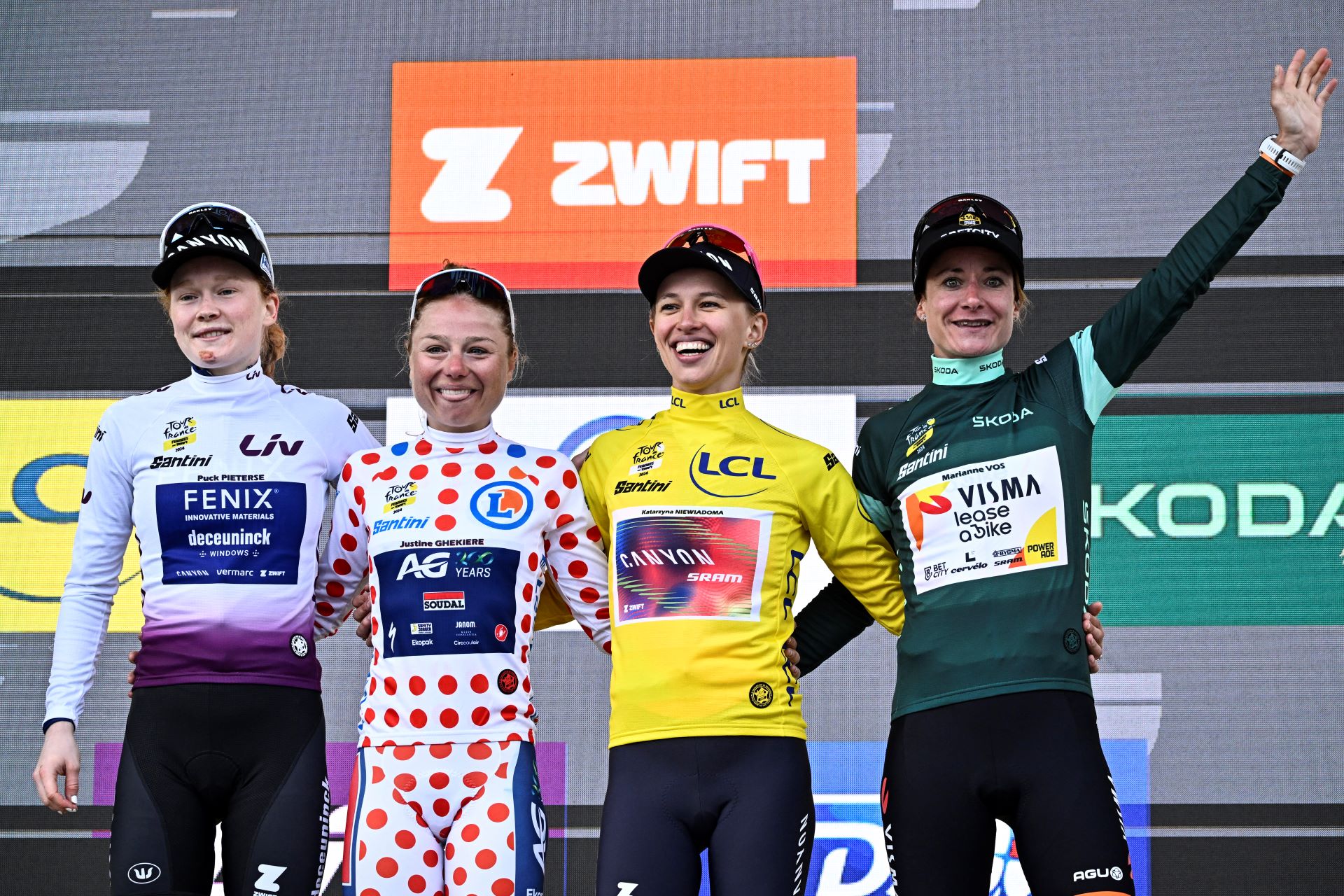

If you followed the Tour de France Femmes avec Zwift this year, you'd be forgiven for thinking that Zwift ran the whole show. The virtual cycling platform's bright orange and pink branding was everywhere, and the brand's squirrel eclipsed the lion as the race's mascot. Stage winners were handed a plush version of this furry icon, while a life-sized version mingled with the crowd, distributing caps and posing for pictures with fans.
But Zwift's impact goes far beyond mascots, branding and adding its name to the official race title. Since coming on board as the presenting sponsor in 2022, the company has been a driving force behind the event’s revival. Its financial backing and four-year guarantee presented the race organisers, the A.S.O, stability and time to establish the event and drum up commercial interest for its continuation — a feat previous renditions of a women's Tour de France all failed to do.
The 2022 Tour de France Femmes avec Zwift was the first official Tour de France for women in 33 years, and already, just three years into its revival, it’s almost impossible to imagine a world where women don’t vie for the iconic Maillot Jaune.
While Zwift calls itself women's cycling's "biggest fans," their investment isn’t purely passion-based. Its return on investment is measured in brand value, visibility and affinity. That, and decreasing its own gender gap on the platform, where women make up approximately 20% of its user base.
"We can spend our money in a lot of ways, and we decided to spend it on this. This investment is an extension of our mission to create more space in the sport, to do things differently. It's clear that the women's pro peloton was ready for this exposure," Kate Veronneau, Zwift Director of Women's Strategy, told Cycling Weekly.
"This race has exceeded everybody's expectations and we're thrilled with the results. The visibility we get from just the content created, the media, the attention of this race, the viewership is phenomenal. This puts our brand and our values front and centre."
The race has been so successful that Zwift has extended its title sponsorship for another year, bringing it to five years.
The latest race content, interviews, features, reviews and expert buying guides, direct to your inbox!
"Sponsoring the Tour is one of the most exciting things that we do. We're really proud of it. There's no reason to stop now," Veronneau said.
Cycling Weekly had the exclusive opportunity to speak with Veronneau and CEO Eric Min about the company's involvement in the Tour, their vision for the future, and the broader business case for investing in women’s cycling.
Watch the Femmes
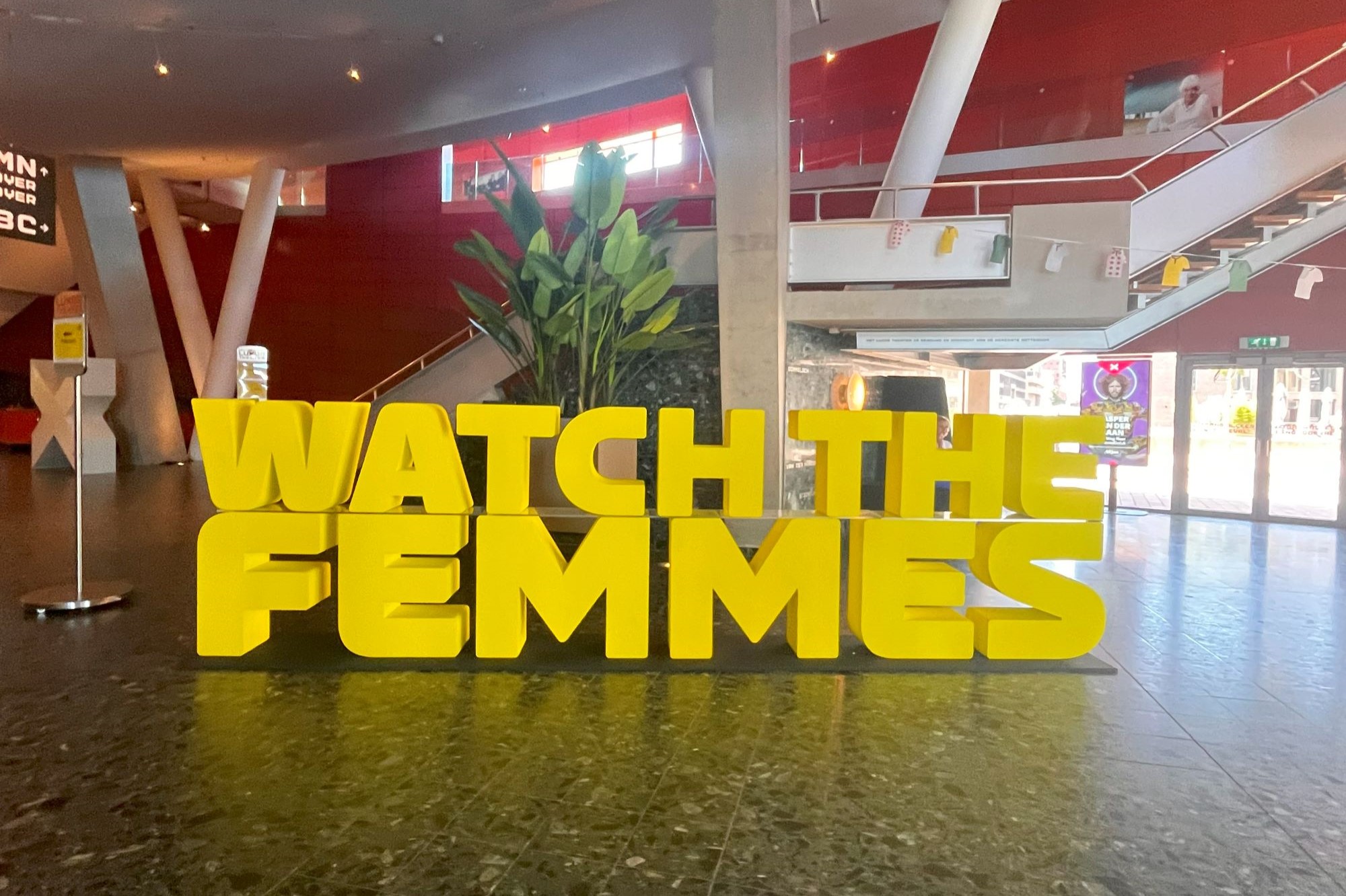
Zwift's sponsorship of the Tour de France Femmes is part of the company's broader strategy to invest in and grow women's cycling. It's more than a financial sponsorship; it's a movement, Veronneau said.
The movement, named "Watch the Femmes”, was born from the Zwift Academy, a highly popular talent identification programme that scouts the best cycling talent worldwide using the Zwift virtual cycling platform and places the winner in a professional team. It started in 2016 as a women's-only programme and gave Zwift an inside look into the women's side of the sport and, consequently, a desire to improve it.
Zwift's partnership with the A.S.O. began during the pandemic lockdown in 2020 with a virtual Tour de France. It was a stepping stone that laid the groundwork for something bigger.
"I think we were the perfect partner to come on board as title sponsor because we're not just sponsors: we are women’s cycling’s biggest fans,” Veronneau said. "We never wanted to just put our name on it. We really wanted to build this movement."
The Tour de France Femmes made its debut in 2022 with Zwift as the presenting sponsor, and it was an immediate hit. Social media engagement skyrocketed, more than 23 million viewers tuned in to watch the races live, while thousands more lined the roadside, and media outlets worldwide provided extensive coverage. Zwift, too, benefited, experiencing an 8.9% increase in female subscribers in the first year alone.
Three years on, Veronneau confidently describes the Tour de France Femmes avec Zwift as “an absolute, clear, undeniable success.”
The Business Case for Investing in Women's Cycling
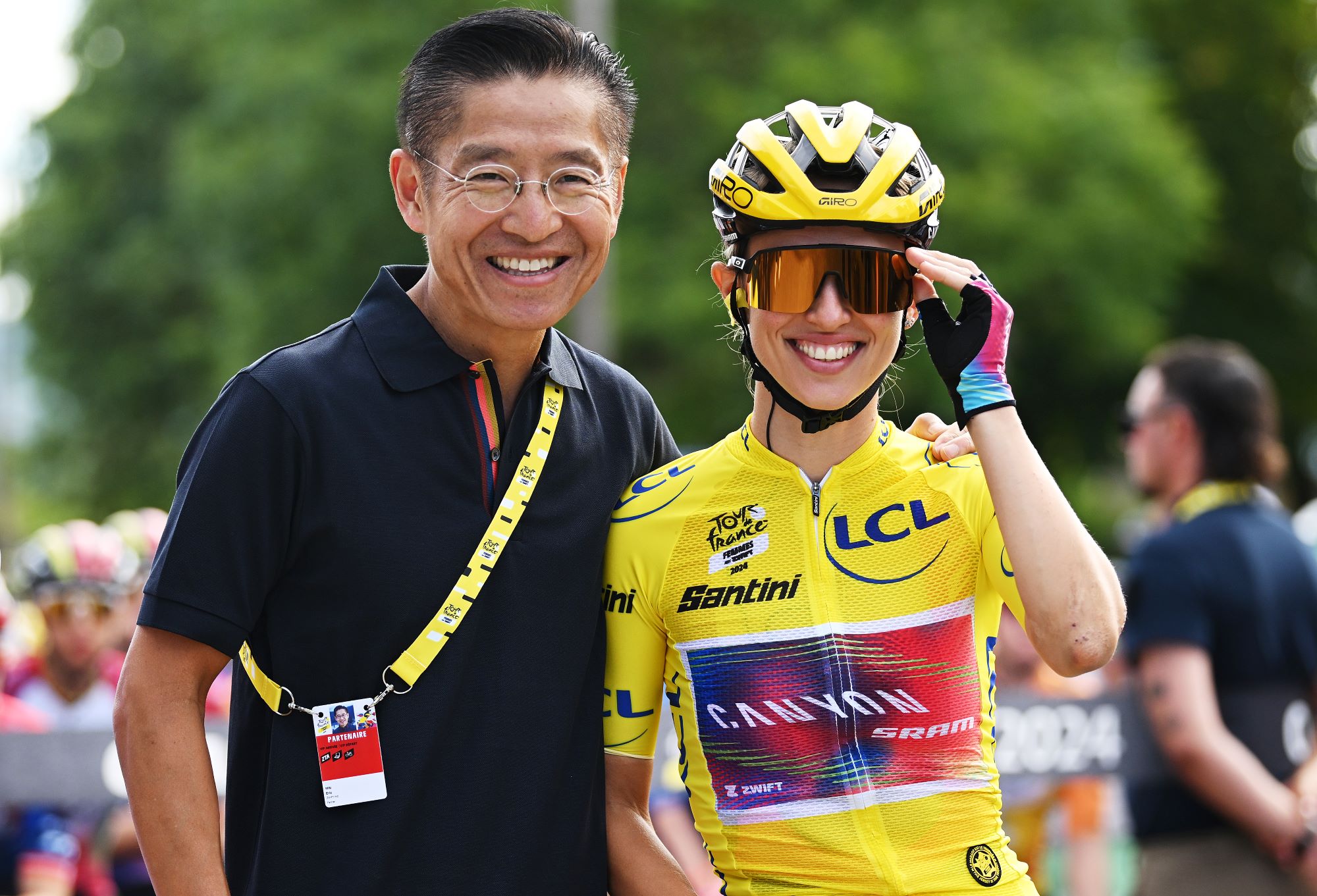
Zwift's CEO Eric Min poses for a photo with race winner Kasia Niewiadoma.
Zwift's investment in women’s cycling isn’t driven by passion alone; there’s a business case to be made as well.
“At the end of the day, we’re a business,” Veronneau said. “[Our investment] needs to contribute to the bottom line. And it does. It absolutely does.”
Zwift’s CEO Eric Min agrees, stating, "I think it’s good business. Look at how many eyeballs we’re getting on a per-day basis. The opportunity for us is that there's just so much upside on the women's side compared to the men's side – so much headroom in terms of growth, investment, viewership, and women's participation. This is the obvious place to invest if you're a consumer brand.”
The gain comes primarily in the form of visibility, brand awareness and brand affinity.
"I honestly think that this sponsorship is the reason why we never dipped after COVID. We went from exponential growth to growth. It is the visibility of this sponsorship and Paris-Roubaix Femmes avec Zwift as well,” Veronneau said.
“The whole Watch the Femmes campaign puts us in the spotlight and I think that if you were already on Zwift, you stayed on Zwift because you felt good about how we were investing our money. And if you didn't know about Zwift and now you do.
"As women's cycling grows, that growth is reflected in our growth."
One of Zwift's aims was to decrease its own gender gap. Before 2022, women made up only 9% of its user base. Today, that number sits around 22%.
“All signs point to it being a very positive thing for the business and, of course, an incredibly positive thing for the sport. And those go hand in hand," Veronneau said.
The commercial success of the Tour de France Femmes is crucial in ensuring the event’s continuation and demonstrating to the A.S.O. that a women’s race is a worthwhile investment. Historically, the organisation hasn’t been the biggest advocate of women’s cycling, arguing that public interest and commercial viability were lacking.
"With A.S.O, to be perfectly frank, it needs to work in their portfolio, as they run the highest profile races,” admitted Veronneau. “Seeing the impact, seeing the fans and the viewership numbers, I think that we've successfully convinced them that women's cycling is a credible, exciting opportunity. This is what fans want. It not only makes them look good, but it achieves their business objectives."
The Future
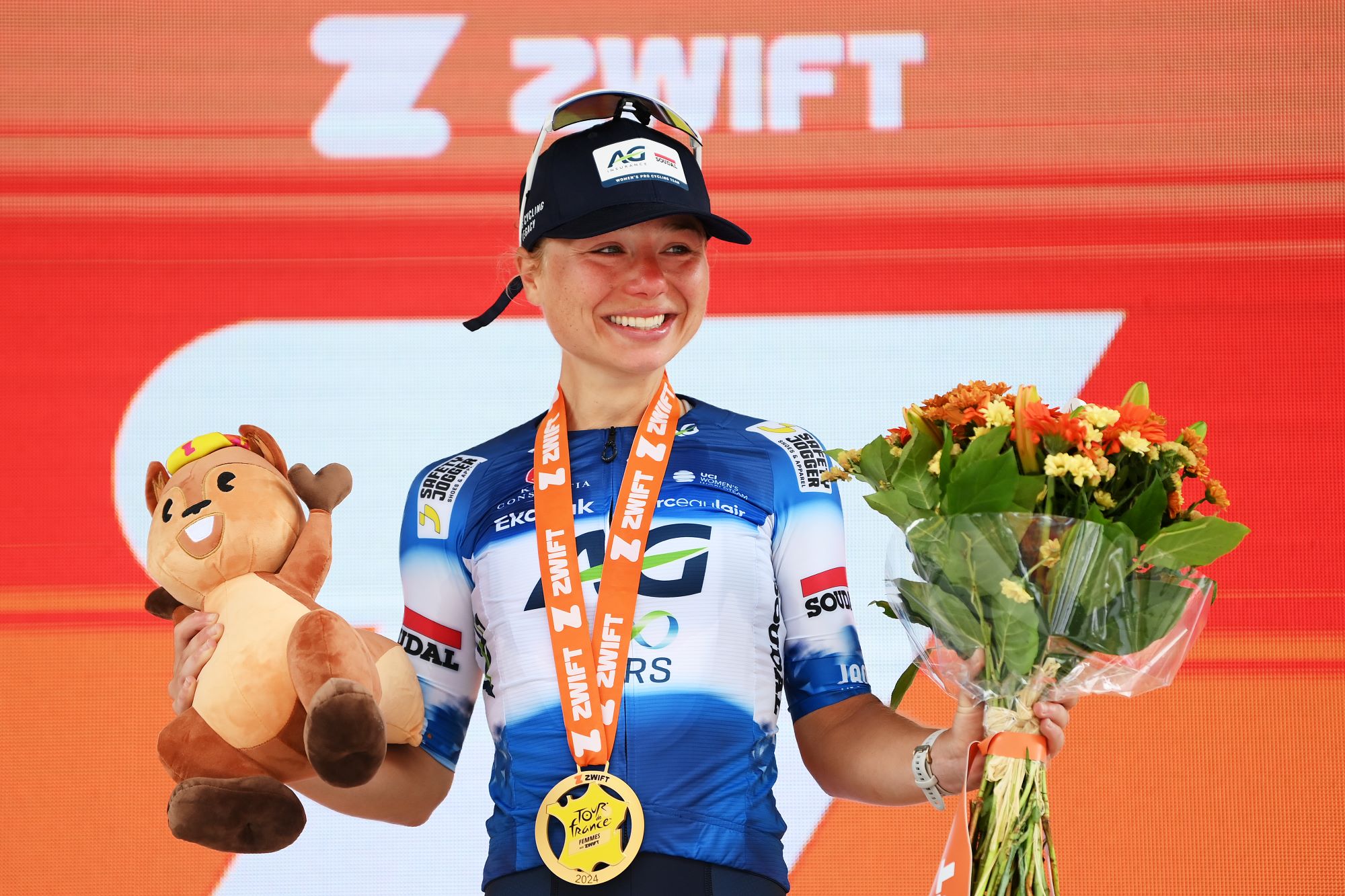
Stage winner Justine Ghekiere
As is true for women’s cycling in general, the history of a women’s Tour de France has been marred by inconsistency, with promising races vanishing after just a few seasons. However, Veronneau is convinced that the Tour de France Femmes is here to stay.
“The Tour won't go away. Nobody will let that happen. This is too big. Honestly, it's too successful,” said Veronneau. "I've seen such wonderful developments and evolution in their content and in the way that A.S.O is talking about the race. You can definitely feel it. A.S.O. believes in this.”
That doesn’t mean the work is done, however. Veronneau said she’ll be pushing for more extensive broadcasting, investments from other brands and a bigger price purse.
“Now that we have proven that the race is successful and that it is a valuable entity, that needs to get back to the riders,” Veronneau stated. “I firmly believe in that.”
Currently, the Tour de France Femmes avec Zwift prize purse, set by the A.S.O, is €250,000, with €50,000 for the winner. In contrast, the men’s Tour de France prize purse in 2024 was €2.5 million, with €500,000 for the winner. Of course, the women race for fewer days than the men; still, these numbers equate to €31,250 per stage vs. €119,047 per stage.
Looking ahead, the 2025 Tour de France Femmes avec Zwift will be the longest yet, with nine stages spread over one week and two weekends. That still pales in comparison to the men’s 21 stages. However, few are calling for a three-week race and according to race director Marion Rousse, slow growth is critical to the event’s survival.
“We certainly don’t want to expand too quickly," Rousse told Cycling Weekly. "I want the race to still exist in 100 years' time, and not shut down in a few years. We have to take it little by little.”
Veronneau and Min agreed that as long as the race exists, Zwift wants to be part of it in some way.
“You’re going to see much more Zwift,” Min promised, hinting at possible developments such as a L’Étape du Tour cyclosportive at the Tour de France Femmes in future years.
“Getting more people on bikes, that is our ultimate goal – indoor or outdoors."
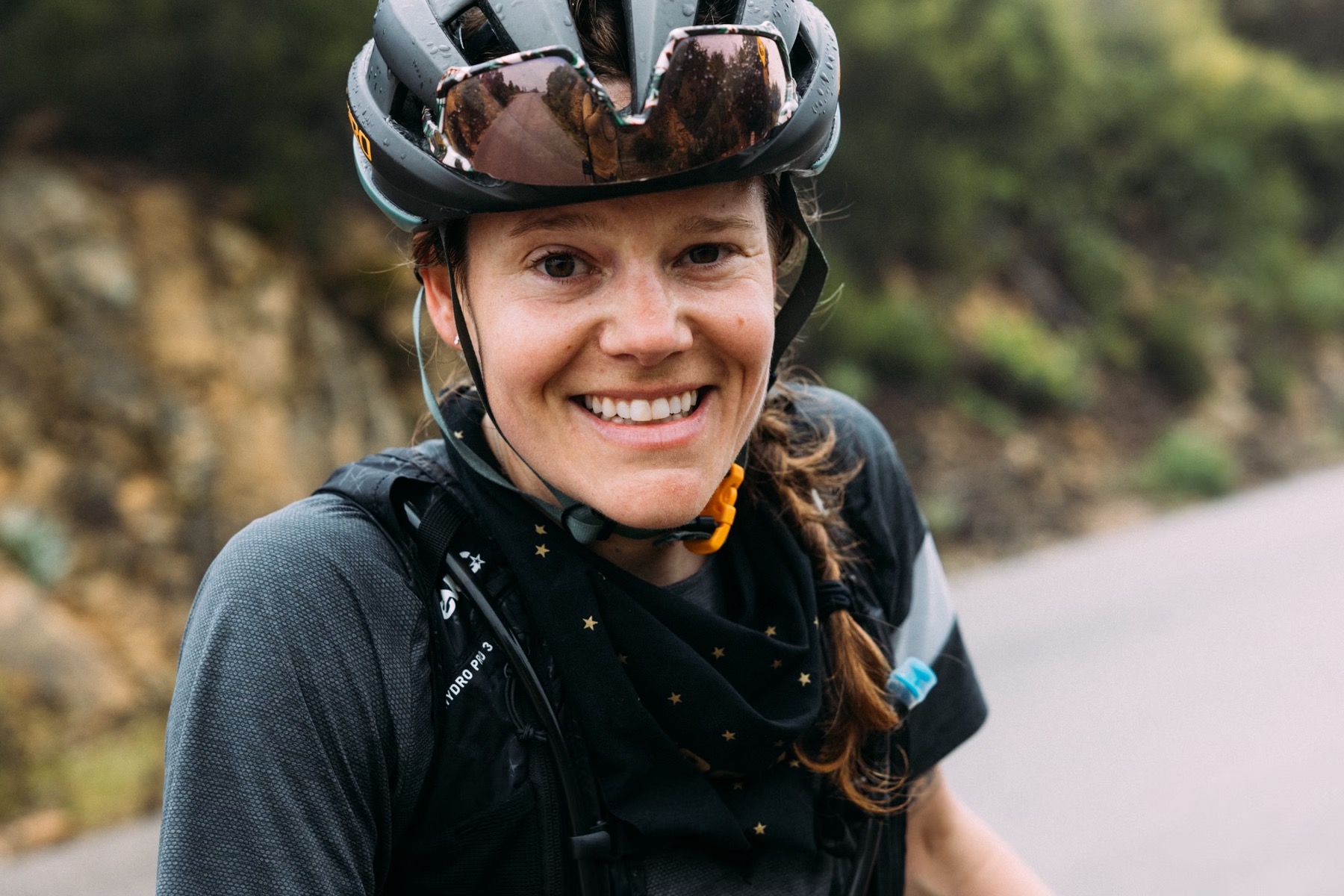
Cycling Weekly's North American Editor, Anne-Marije Rook is old school. She holds a degree in journalism and started out as a newspaper reporter — in print! She can even be seen bringing a pen and notepad to the press conference.
Originally from the Netherlands, she grew up a bike commuter and didn't find bike racing until her early twenties when living in Seattle, Washington. Strengthened by the many miles spent darting around Seattle's hilly streets on a steel single speed, Rook's progression in the sport was a quick one. As she competed at the elite level, her journalism career followed, and soon, she became a full-time cycling journalist. She's now been a journalist for two decades, including 12 years in cycling.